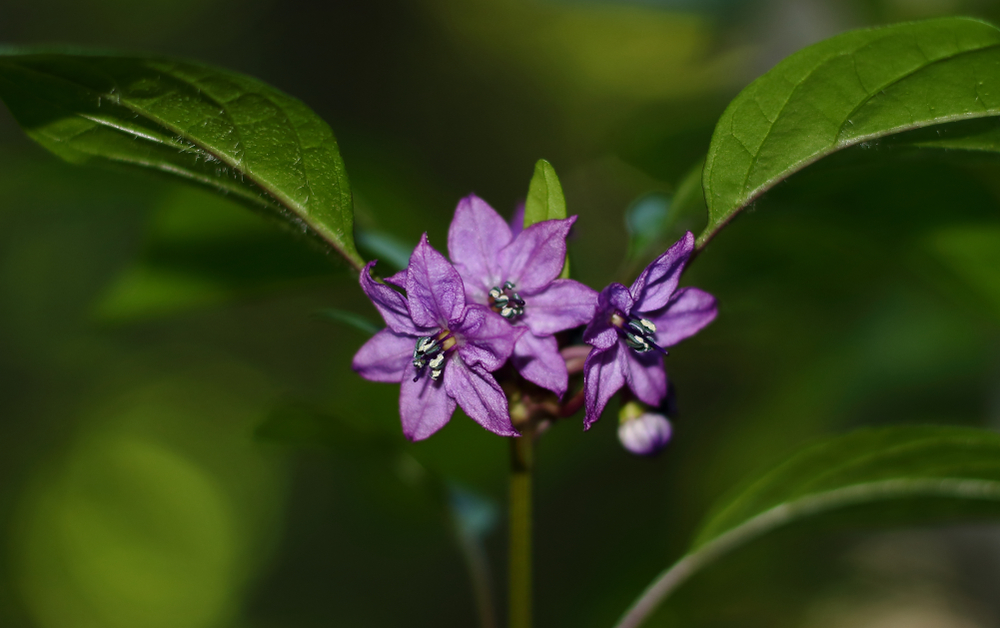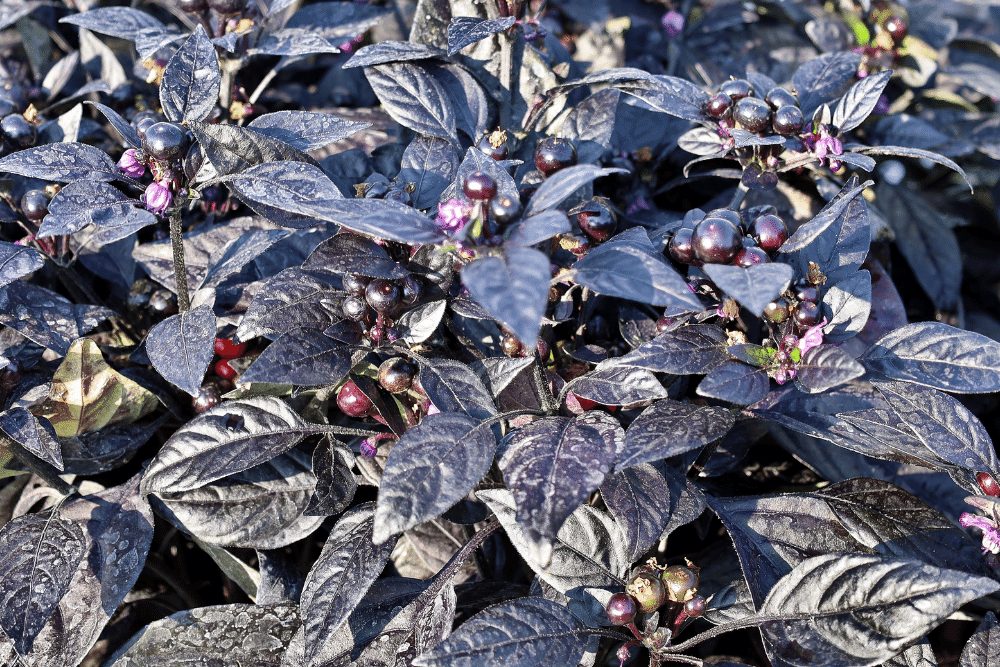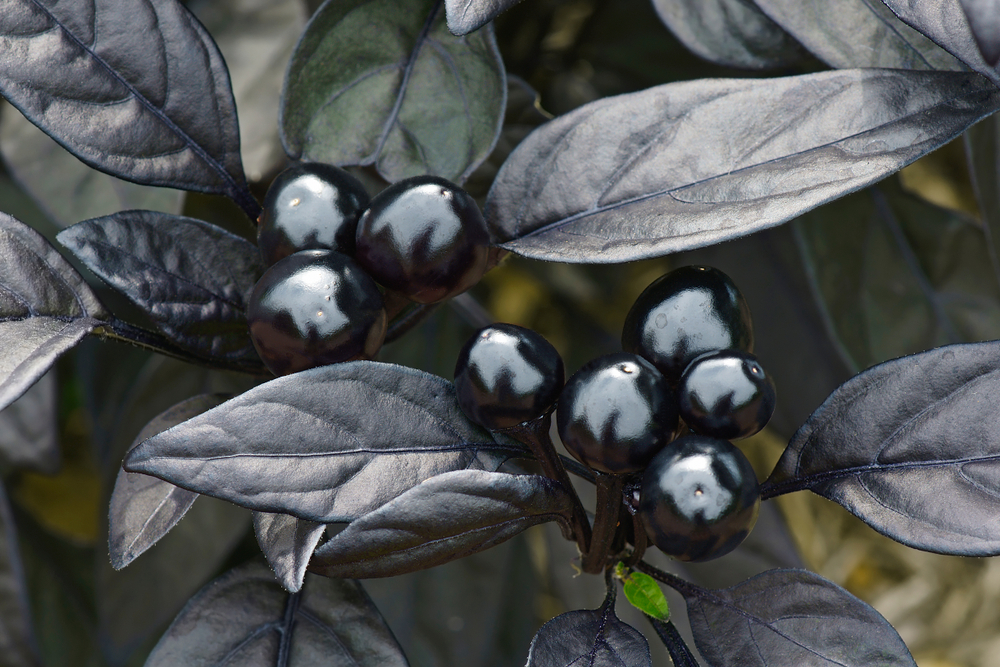Black pearl peppers are one of the most unusual species of peppers available. From their glossy black leaves to the dark fruit, this ornamental pepper is a delight to look at and eat. But although beautiful, these small, dark peppers rarely find their way into everyday cuisine.
What Are Black Pearl Peppers?
When it comes to pepper plants, the black pearl can be a gem in your garden. This ornamental pepper boasts stunning black leaves and small, chiltepin size fruit that begin black and ripen into a deep purple and eventually red.
Black pearl peppers are a cultivar of Capsicum annuum developed by agricultural research scientists Rob Griesbach and John Stommel. They’re highly prized for their dark foliage and striking appearance, even winning an award from All Americas Selections (AAS) in 2006.
Black Pearl peppers at a glance:
Origin: United States
Color: Shiny black foliage with small fruit that ripens from black to purple to crimson red. Because plants can have fruits at all stages of maturation at once, the display of jewel-tone colors is dazzling to behold. The plant’s clusters of flowers are a brilliant purple before turning into fruit, adding another layer of color and texture to this beautiful ornamental pepper plant.
Size: Plants are 14-18 inches at full height. Peppers are small, round, berry-like, and approximately the size of a chiltepin or about 3/8 inch.
Edible: Yes
Taste: Spicy with bitter, citrusy flavors.

Can You Eat Black Pearl Peppers?
While most ornamental plants are grown for their aesthetic value, the black pearl ornamental pepper is attractive and edible.
Their citrusy flavor and medium spice make them a welcome ingredient in many dishes, and their unique appearance makes quite a statement. Not only can they be eaten fresh, but when dried and ground into a powder, they also make an excellent seasoning.
How Spicy Are Black Pearl Peppers?
The black pearl is considered a hot pepper, and the heat level can be too high for some. On the Scoville scale, black pearls measure 10,000-30,000 SHUs, making them hotter than the typical jalapeno and slightly less spicy than cayenne peppers.
Like other peppers, you can harvest and eat black pearl peppers at any stage during the ripening process. Purple peppers will be the mildest, with a fresh, bitter taste. The peppers turn black in the middle of the ripening process. Fully ripe black pearl peppers are a deep crimson red, similar in color to cayenne peppers. Red black pearls are also the spiciest!
The following chart can help put the heat level for the black pearl in perspective:
- Habanero pepper, 100,000-300,000 SHUs
- Cayenne pepper, 30,000-50,000 SHUs
- Black pearl pepper, 10,000-30,000 SHUs
- Jalapeno pepper, 2,500-8,000 SHUs
How To Grow Black Pearls
Black pearl peppers are easy to grow, which is good because you aren’t likely to find them in any grocery or specialty store. You can purchase black pearl pepper seeds online through many retailers, including Amazon.

In the warmer areas, black pearl pepper plants will grow as perennials, preferring USDA hardiness zones 9-11. They can still be grown effectively in cooler regions but as an annual.
When starting from seed, plant indoors in late winter, and keep them warm in a sunny location for approximately 6-8 weeks or until their 3rd set of leaves appear. Transfer seedlings to a larger container or outdoor garden when soil temperatures exceed 65 degrees Fahrenheit.
Like all other species of Capsicum annuum, black pearl peppers prefer warm temperatures and full sun.
Once established, they require very little in terms of maintenance.
- Well-drained soil is a must. If you have dense or clay soil, compost will help.
- Black pearl plants like room to spread, so adequate spacing is essential.
- Black pearl can take the summer heat, but if temperatures are over 100 degrees Fahrenheit for an extended period, shading your plants can be beneficial to prevent sunburn.
Black Pearl Peppers In Cooking
Because they’re primarily used for decorative purposes in landscaping, you won’t find cookbooks full of black pearl pepper recipes. That’s not to say recipes don’t exist, however.
Most recipes that call for hot peppers can work using black pearl peppers, at least as a supplement to the prominent pepper. Remember that they’re tiny, so if they’re a significant part of any recipe, it will likely take many of them.
They’re most commonly used dried and ground into a spicy chili powder. Try it in place of recipes that call for cayenne powder or hot paprika.

